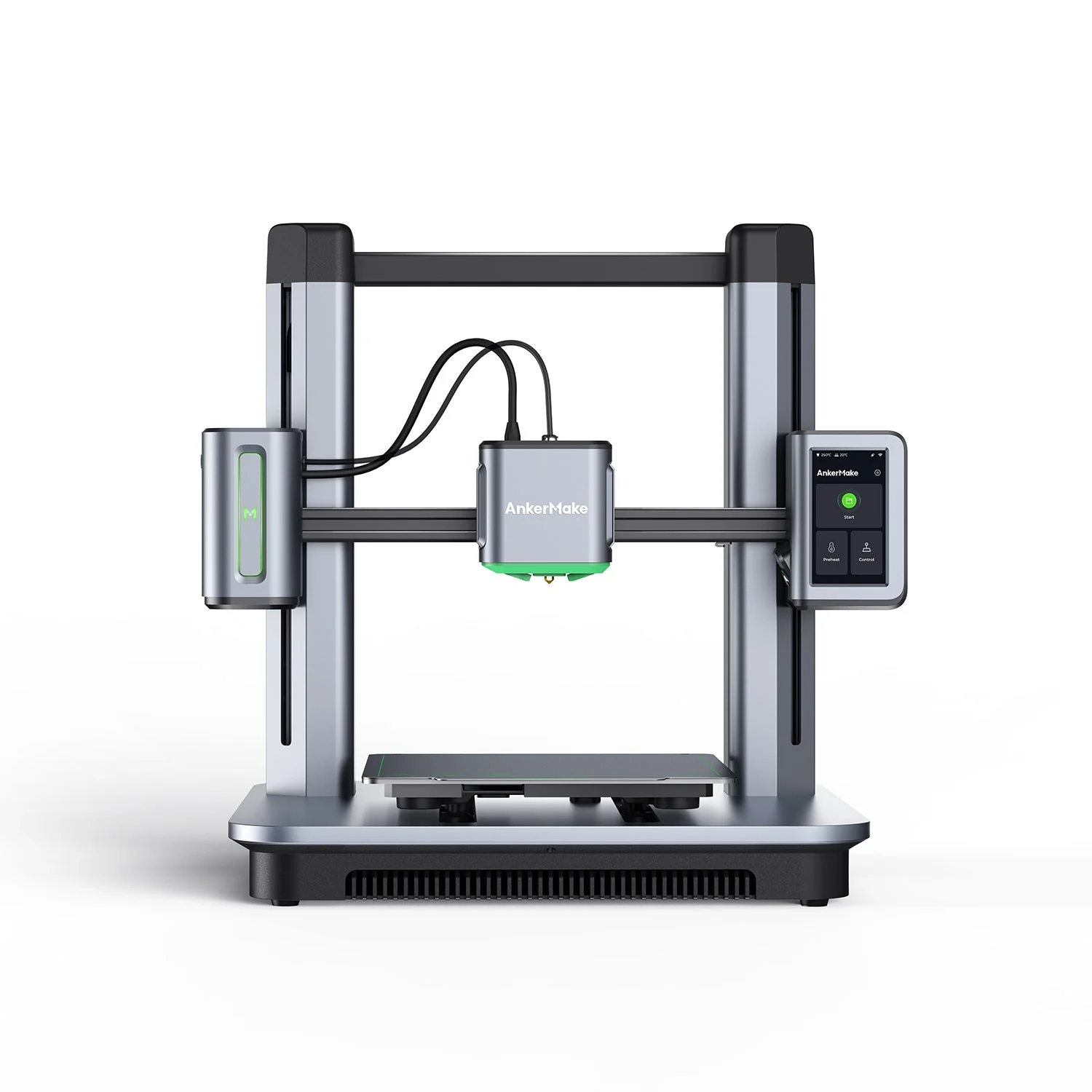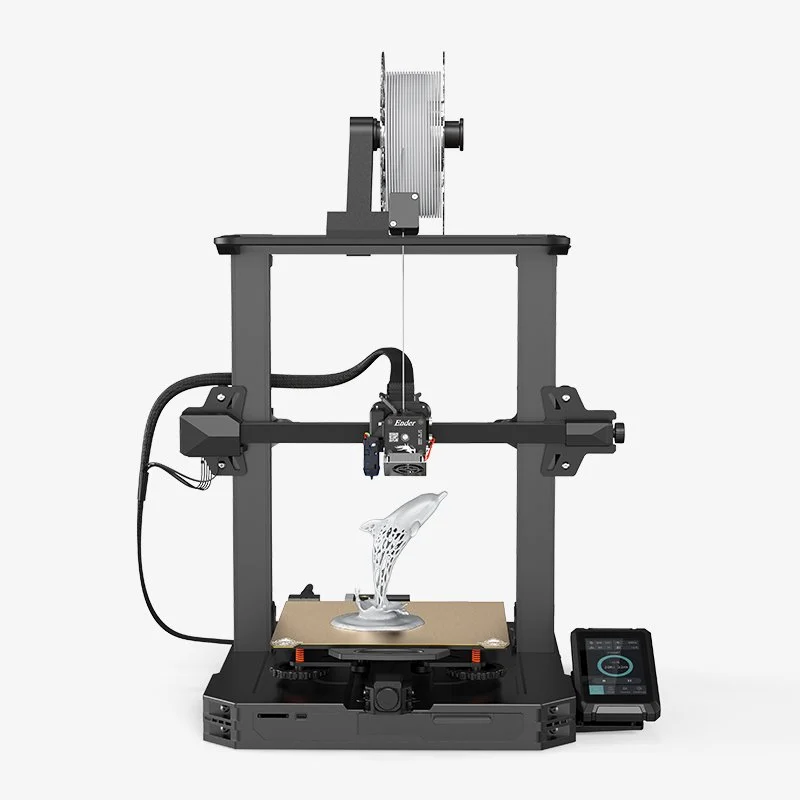Compare M5 vs Ender 3 S1 PRO
Comparison between the best 3D printers
Choose the best 3D printer at the best price. The cheapest 3D printers are here.
Buy a 3D printer here with 3D Fila.
 |
 |
|
| Model | M5 |
Ender 3 S1 PRO[BUY Ender 3 S1 PRO] |
| Printing Material | Filament | Filament |
| Buy Filament for AnkerMake M5 | Buy Filament forCreality 3D Ender 3 S1 PRO | |
| Estimated price | $497,00 | $499,00 |
| Manufacturer | AnkerMake | Creality 3D |
| Release Year | 2023 | 2022 |
| Print Volume [mm] | 235x235x250 | 220x220x270 |
| Printer Size [mm] | 502x438x470 | 450x49x620 |
| Weight [kg] | 12,6 | 8,7kg |
| Power Loss Recovery | YES | YES |
| Enclosed printer | NO | NO |
| Bed Leveling | Automatic | Automatic |
| Filament End Sensor | YES | YES |
| Bed type | Heated | Heated |
| Power supply system | Direct Drive | Direct Drive |
| Standard nozzle | 0,4 | 0,4 |
| Maximum Nozzle Temperature [°C] | 260 | 300 |
| Maximum Bed Temperature [°C] | 100 | 110 |
| Maximum printing speed [mm/s] | 500 | 150 |
| Filament holder | YES | YES |
| Camera for supervision | YES | YES |
| Recommended filaments | PLA, PETG, ABS | PLA, PETG |
| Recommended slicers | AnkerMake Studio (macOS, Windows), Simplify3D, Ultimaker Cura, PrusaSlicer | Cura, Simplify, Slic3r |
| Maximum Resolution [mm] | 0,1 | 0,1 |
| Processor | ||
| Display | Touchscreen 4,3'' | Display touchscreen 4,3'' |
| Power Supply | 350 W | 350 |
| Connectivity | Wi-Fi, USB-C, OTA Upgrade | SD |
| Operating systems | Windows, Linux, Macbook | Windows, Mac, Linux |
| Date of registration in the system | 2024-07-08 | 2022-10-11 |
| Release date | 2023 | 2022 |
| Extra features | The AnkerMake M5 printer stands out for its impressive print speed, reaching up to 500mm/s. It features AI print monitoring, an integrated camera for creating timelapses, auto-leveling bed with pressure sensor, direct extruder, flexible PEI-coated build plate, and Wi-Fi and USB-C connectivity. Assembly is quick and easy, and the printer is designed to deliver high print quality and ease of use. | Creality's Ender 3 S1 PRO is an innovation in the Ender 3 series, featuring a Sprite Pro Extruder capable of reaching 300°C and dual lead screws on the Z axis, ensuring greater stability and print quality. Its PEI-coated print bed, combined with CR-Touch automatic leveling, provides excellent adhesion and ease of part removal. The user interface, via a 4.3-inch touchscreen, offers intuitive and efficient control, although it has some limitations regarding the handling of long file names and navigation. The well-designed extruder ensures effective cooling and handling of various filaments, although there may be a slight ghosting effect at high speeds due to its weight. This printer represents a balance between technological advances and operational challenges, remaining faithful to the quality expected of the Ender line. |
| Support for multiple colors and materials (AMS and CFS) | NO | NO |
Notes * |
||
| Cost-benefit | 7 / 10 | 7 / 10 |
| Hardware | 3.5 / 10 | 2.4 / 10 |
| Tela | . | . |
| Print volume | 3 / 10 | 3 / 10 |
| Performance | 4 / 10 | 1 / 10 |
| [BUY Ender 3 S1 PRO] |
Conclusion |
| In conclusion, both the AnkerMake M5 and Creality Ender 3 S1 PRO are solid choices for 3D printing enthusiasts, each with distinct advantages. The AnkerMake M5 excels in print speed and features, boasting a maximum output speed of 500 mm/s, which allows for rapid production without compromising on quality. Its user-friendly features, such as AI print monitoring and a flexible PEI-coated build plate, enhance the overall experience, making it well-suited for users seeking efficiency and ease of use. On the other hand, the Ender 3 S1 PRO, while slightly slower, offers impressive thermal capabilities with a maximum nozzle temperature of 300°C and a robust design that ensures stability during printing. Its improved extruder design and automatic leveling contribute to high-quality prints, albeit with some limitations in handling more complex navigation tasks. Considering the prices are relatively similar, the AnkerMake M5 offers a better cost-benefit ratio and performance speed, while the Ender 3 S1 PRO may appeal to those loyal to the Creality brand and prioritizing a reliable and stable printing platform. Ultimately, the decision between the two will depend on individual preferences, specific project requirements, and which features align best with one’s printing needs. |

